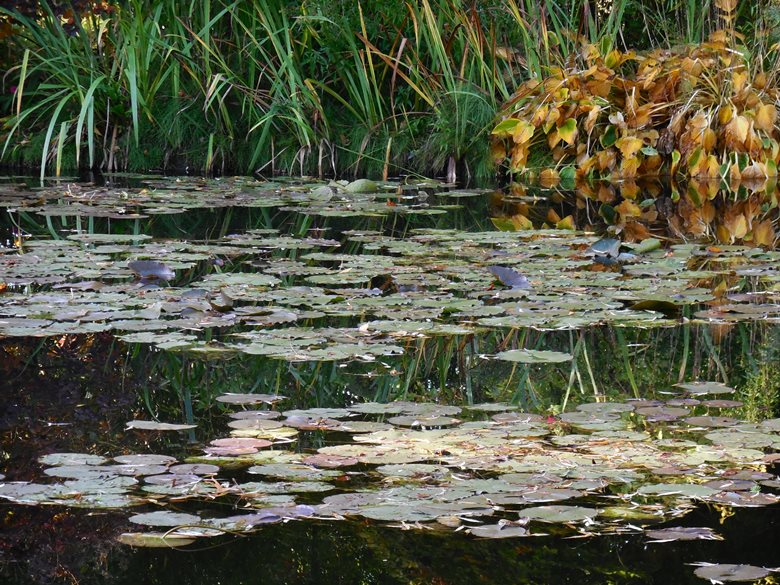Cruising on the Seine River – a stop at Monet’s Garden in Giverny


DAY 5 – ON THE SEINE RIVER BETWEEN PARIS AND NORMANDY — I’m walking in Monet’s glorious gardens at Giverny on sunny day thinking about a little girl skipping over the famous green Japanese Bridges a big smile on her face.
That was my daughter Melanie, 7 at the time, who was enamored of the book Linnea in Monet’s Garden, so from the time we announced we were going to France in 1998, she announced we must visit Monet’s Garden. So that trip we took the train from Paris and thought Mel, her older sister and her sister’s friend who would accompany us on that trip could sketch in the garden. The water lilies! The flowers! But it was the summer and it was packed. Indeed, Giverny gets ½ million visitors just in the seven months it is open. Still, Mel was very pleased with herself that she had led the way and I saw then the power of travel for a child—to see something real that they’d only seen in a book, to have the “grownups” and older siblings follow their lead.
This time we have returned to Giverny with cousins, the first stop on an Avalon Waterways cruise from Paris to Normandy. A week before Giverny closes for the winter, it is crowded but not packed. We could have sketched in the garden, had we brought sketch pads. I tried to imagine what it must have been like when the house was filled with Monet’s two sons and his six stepchildren, the children of Alice Hoschede who Monet married after his first wife died. When they first moved to Giverny in 1883, he could only afford to rent the house which our guide told us he fell in love with from the train—the pink brick, the green shutters, the orchard.
As he became more successful, he bought the house and added on to accommodate his brood and transformed the orchard into the gardens, creating the lily pond that is so famous in his paintings. From the time of his arrival at Giverny until his death in 1926 at age 86m he oversaw planting of hundreds of plants and thousands of seeds in his garden in the small village just 44 miles northwest of Paris.
Many come to see the garden with its water lily pond and bridges either after or before seeing his Lily Pond masterpieces in the Musee de l’Orangerie in Paris and elsewhere. In fact, Monet painted 48 canvases of the lilies and 44 of the Bridge including paintings of his children and stepchildren in the gardens. He was influenced by Japanese prints—you can see 100 of them in the house.
At first, our guide Christine Brouillet tells us, the locals were not happy when Monet diverted a tiny river estuary to build his pond but in the end, as the garden bloomed and Monet’s fame grew, they appreciated what he’d done. He love d the light of the Seine Valley and at one point, painted a series of the Rouen Cathedral nearby at different times of the day
Young American painters came to learn from Monet but he didn’t want to teach them. They set up camp anyway, staying in a grocery turned hotel still here today, Hotel Baudy, and holding raucous parties often attended by the Monet children.
The Maison et Jardin Claude-Monet has been carefully restored— thanks to millions donated by Americans–the kitchen with its blue tiles, the yellow dining room and just this year, Monet’s bedroom on the second floor. There are photographs displayed along with reproductions of his works on the walls.
Giverny and the entire Seine Valley were essential in the history of the impressionist movement. We stand in the room that was his studio and a sitting room when he wasn’t working. Later he would build two other studios including one large enough for the huge Water Lilies paintings that now hang in l’Orangerie.
The best, of course is the garden where 10 gardeners work, planting some 100,000 plants every year—roses, tulips, iris, azaleas. There still are some blooms when we visit the end of October—just no smiling little girls skipping over the bridge.
Some day, I think, I’ll return with her children and tell them that story, letting them show me the way.

